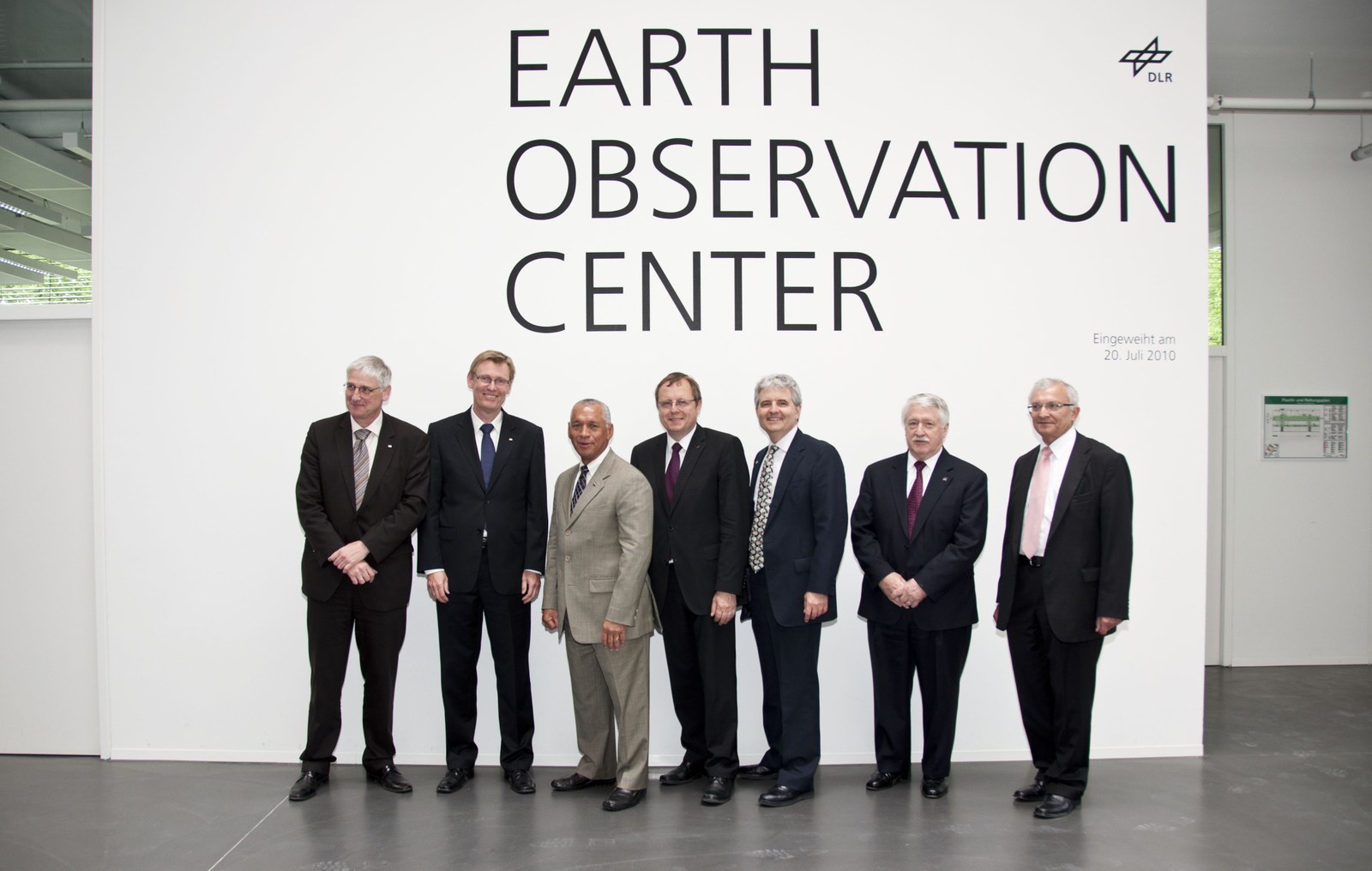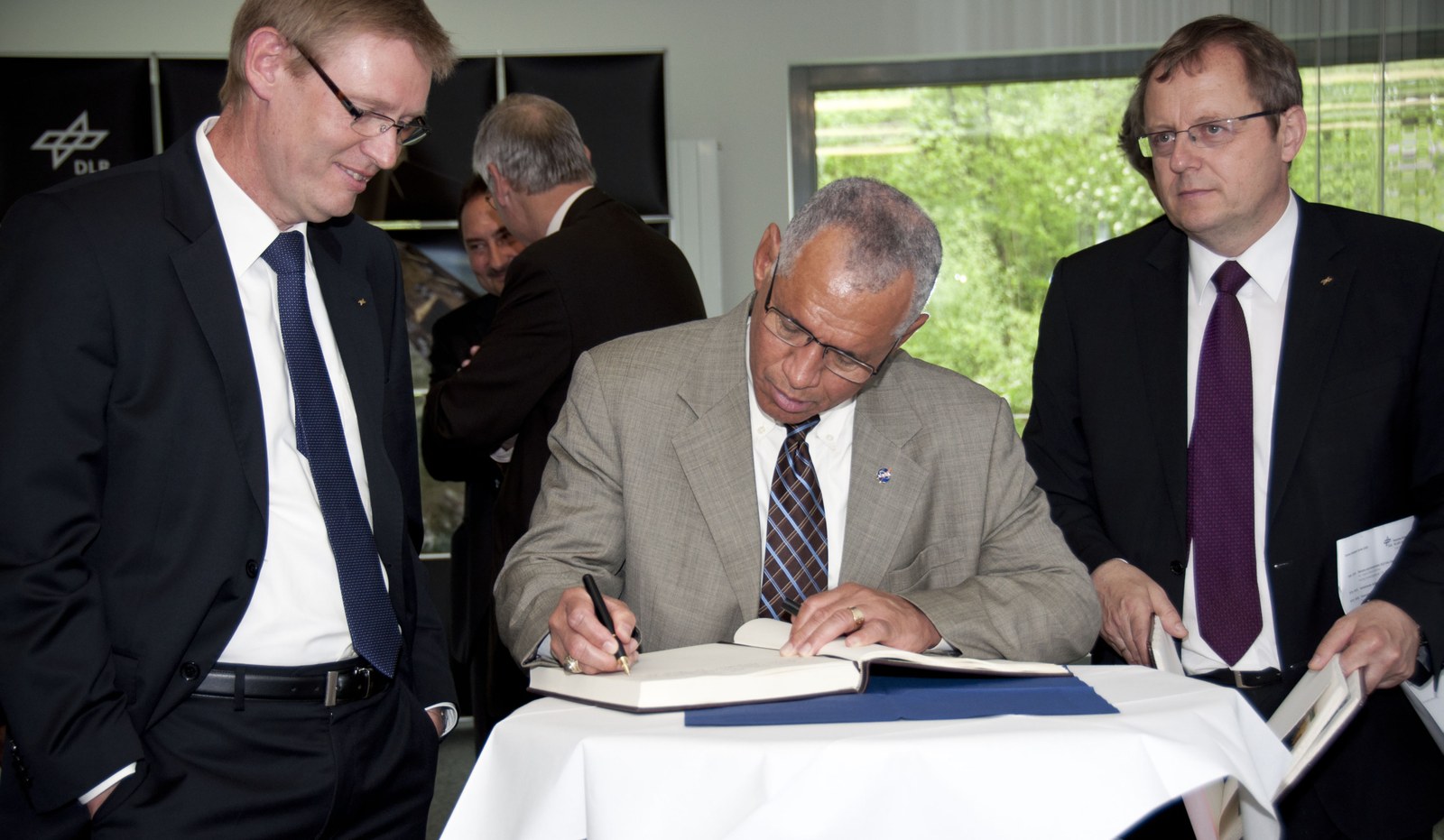Charles Bolden, head of NASA visits the EOC

In the course of his tour of Germany, the head of NASA, Charles Bolden, also visited DLR’s Earth Observation Center EOC. At the EOC Service Lab he learned about research related to satellite-supported disaster relief activities. EOC scientists are currently taking three-dimensional measurements of the highly active Popocatepetl volcano near Mexico City using data from the German radar satellites TerraSAR-X and TanDEM-X in a search for indicators for a possible imminent explosion. The NASA administrator also saw a demonstration of work on risk and vulnerability modeling at EOC and of the decision support system developed there to provide early warning of tsunami.
A second focus was on changes to the atmosphere caused by human activity. EOC researchers depend not only on satellites for this monitoring work. Whereas the distribution of such trace gases in the atmosphere as ozone, methane, and nitrogen dioxide is recorded by satellites, they also use Germany’s highest altitude research station for making ground-based measurements of the atmosphere. DLR operates a P-band spectrometer at the Schneefernerhaus Environmental Research Station (UFS) on the Zugspitze mountain, which enables researchers to promptly detect temperature changes in the upper atmosphere (mesosphere).
At the conclusion of his visit to EOC, the NASA administration could climb the second-highest mountain on earth, the 8611 meter high K2, on an exclusive virtual tour accomplished with the help of the latest simulation technology at the EOC’s GeoVis lab.
Charles Bolden was impressed by the geoscience activities at EOC, stating during his visit that “only by close cooperation, both in producing valuable data and in dedicated research can we improve living conditions for people all over the planet.” “Professional exchanges with NASA are traditionally particularly important for us,” noted Professor Stefan Dech, Director of the German Remote Sensing Data Center and EOC spokesman. “After all, only with international coordination can we achieve our mission to thoroughly document the profound changes occurring on Planet Earth and to understand the processes behind them. The USA will continue to be one of our key partners. Because in addition to national and European earth observation missions, we will also need U.S. environmental satellites such as NASA’s Terra and Aqua satellites to be able to provide the best possible scientific findings as a basis for political decision making,” he continued.

